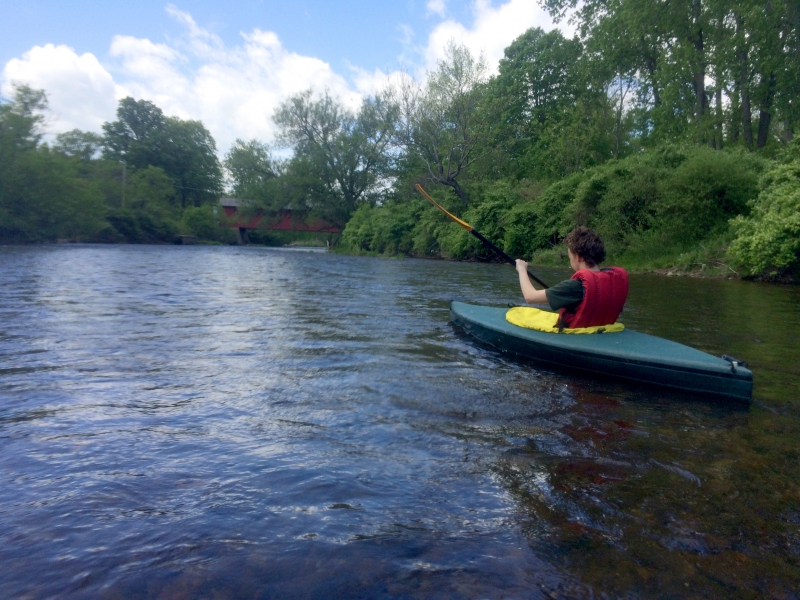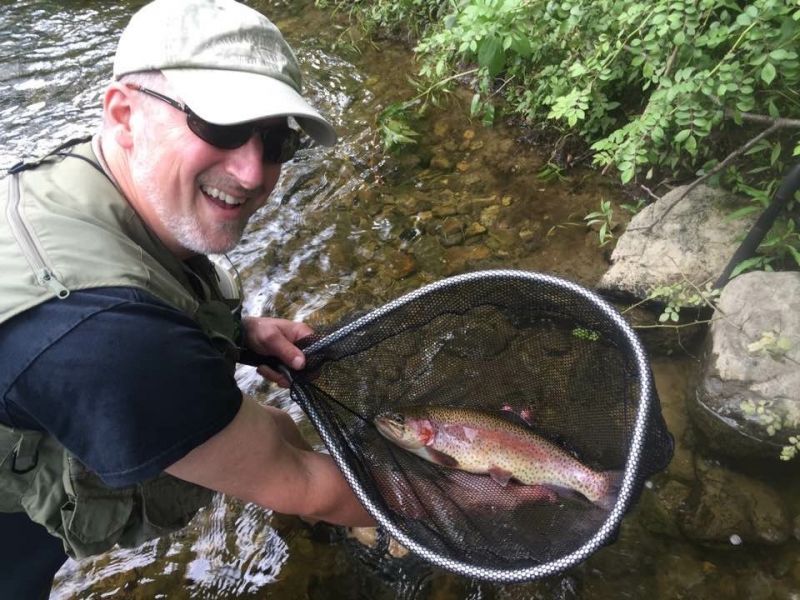I caught my first trout in Paran Creek. And from that first experience… I was hooked
By Jonah Spivak
When I moved to Vermont from New York in the winter of 1976, Jimmy Carter was president, a gallon of gas cost 99 cents, and there were more cows here than people. For a kid from Mahopac this was a huge change! My parents were part of the back-to-the-land movement that had its origins in the late 1960s and peaked in the ‘70s. For them, this was their moment to rediscover themselves.
For me, it ended up being the change that defined my life to come.
We moved into a house that was built in 1807 by a farmer who had become wealthy selling wheat to Europe during the Napoleonic Wars. An architectural gem designed by the same architect as the Old First Church in Bennington, this was to be both our home and the home of my parents’ new business, Hawkins House Craftsmarket. Behind the house was Paran Creek. Hidden beneath the snow when we moved in January, it emerged as a torrent with the spring snowmelt.
It was here I caught my first trout. And from that first experience… I was hooked.
Stream fishing is unlike any other sort of fishing. It is up-close and personal. You have to be sneaky. You have to read the stream’s terrain and use your skill to lure the trout. Casting is precise and short range. It’s tactical.
In contrast, lake fishing is strategic. You read the big picture—temperature, time of day, and weather—and you cast over a wide area.
This joyful discovery of a trout stream in my backyard, and the experience of living in a big old house with lots of fireplaces but no insulation, really set the stage for who I grew up to be: a lover of history, Vermont, the outdoors, wood stoves, and fishing.
I’ll share with you a wonderful way to experience Vermont’s history, outdoors, and fishing in one nice package.
One of Bennington’s best-kept secrets is the Walloomsac River. Along this lovely run, all in one car trip, you can visit all three of Bennington’s covered bridges, discover the place where Vermont began, and catch a trophy trout.
The Silk Road Bridge, on Silk Road, has a pull-off on the north side of the river. There’s a trail down to the water where you can take a few casts of your line.
Return to Route 67A and head west to The Paper Mill Village Bridge, also called the Paper Mill Bridge or Bennington Falls Covered Bridge. Cross onto the “island,” offering a short trail, interpretive signage, and very good fishing holes.
Continue along that same road to the Henry Covered Bridge where there are picnic tables, interpretive signage, great fishing, and a grassy park. This location is more than scenic; it’s historically significant, as it’s where the Breakenridge Standoff occurred: the first armed confrontation between New York and the settlers of what would become the independent Vermont Republic.
So why all these covered bridges anyway? So horses won’t spook while crossing the river? To avoid icing problems in winter? The primary reason was practical: covered bridges lasted longer than uncovered bridges. We keep them today due to our love of our local traditions. And we delight in sharing them with visitors.
Another way to experience the river and see all three covered bridges is by kayak or canoe. For this trip of one to two hours I’m assuming you’re an experienced paddler and comfortable paddling Class I–III rivers. You also want water levels between 1½ feet and 3 feet for ideal conditions. You can get the current water level by visiting water.weather.gov and searching for water levels for the Walloomsac River.
For the paddling trip, start at the Silk Road bridge, or just beyond at the 279 underpass. Park at the underpass just before the electrical power substation. If the put-in is too muddy for your taste go back to the Silk Road bridge and start there. The river is mostly dam-controlled from the Silk Road bridge to the Paper Mill bridge so there is usually enough water to paddle even in dry times. After 1.2 miles you’ll need to portage around the “island” at the Paper Mill Covered Bridge, or simply end your paddling trip there. The official take-out is on the river left, but the river right is usually easier just before the covered bridge. Either way you must exit the river to avoid the dams.
From there, continue another mile or so to Henry Covered Bridge, passing where Paran Creek enters the Walloomsac—yes the same stream where I caught my first trout! You can take out at the Henry Bridge, or continue another 2.2 miles through the most secluded and remote section of the Walloomsac in Vermont.
The take-out location is at a large pool where Cold Stream enters the Walloomsac. I recommend walking down to the water to familiarize yourself as to what the take-out looks like when you drop off your shuttle vehicle so you don’t accidentally paddle past it.
To get to the final take-out, leave from Henry Covered Bridge and drive down Harrington Road 1.75 miles to the bridge over Cold Stream. Park on the side of the road just past the bridge. There is an unimproved fisherman-style trail from the road down to the river.
Now that you’re ready to hit the river, a word on etiquette: As this is a popular trout area, always be respectful of those fishing. When fishing from shore, avoid areas where someone is already standing. When passing fishermen in a boat, do so in full stealth mode—with as little disturbance and paddle splashing as possible. If you are approaching a fly fisherman who is standing in the river, attempt to pass behind the fisherman if possible so as to not to disturb the area they are actively fishing. Doing so will minimize your disturbance of the fish you are passing over, and will make everyone happy.
A final word from someone who grew up here: Vermont is a mindset as well as a place. Wave to people you don’t know. Let the person at the four-way stop go before you. Think yes before you say no. Be fair and be respectful. Become a Vermonter!
Graphic artist Jonah Spivak, who runs Spectrum Design in Bennington, is the second-generation owner of Hawkins House Craftsmarket, along with his wife, Elizabeth Ganger. They have two children, born in Bennington. When he’s not fishing or enjoying the outdoors he is working on plans for the 250th anniversary, in 2027, of the Battle of Bennington and the founding of the Republic of Vermont.























































